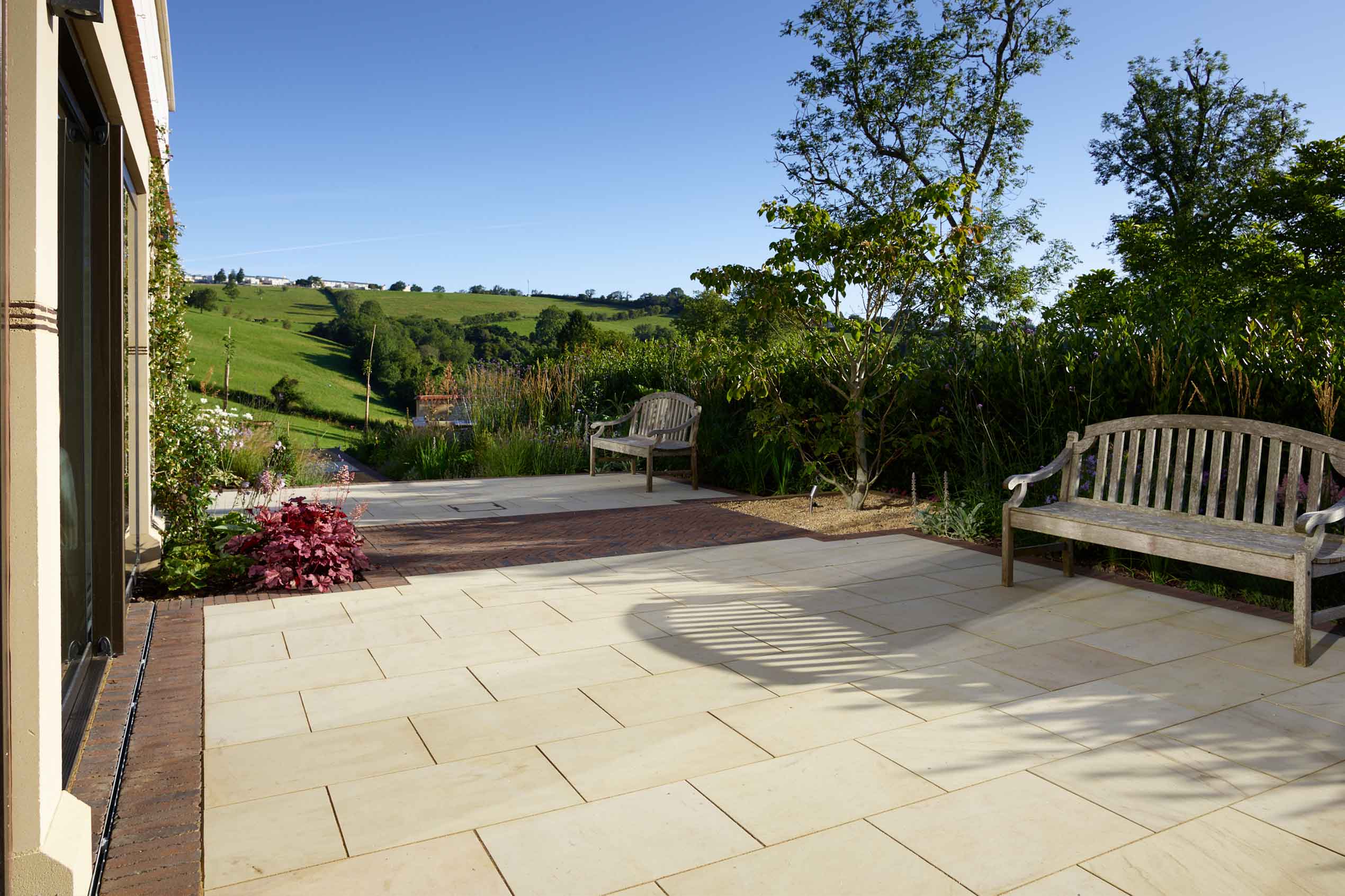What to consider before you install your new patio
An expertly built patio or paving area can transform a garden and become a valuable outdoor space that is accessible all year around. Before you install a patio or paved area, read our advice on how to plan your patio effectively and create a patio you can enjoy for years to come.
Where should I install my patio?
Though the easiest response might be right outside your patio doors, the location of your patio should be determined by how you want to use it. Are you going to use your patio for entertaining? Will you use it for BBQs? Is it a place where the children can play? Is it for sunbathing or would you prefer a shady spot for retreating from the sun? Are there also any views that you want to take advantage of?
Stand in your garden and check where the sun is positioned at the time of day when you most want to use your patio. Dependent on which you prefer, choose a location that is in the sun or the shade. If privacy is important, check if the location of your patio will be overlooked.
Next, look at how you will reach your patio from the house. For easy transportation of food, drink or other items, consider a footpath or stepping stones as part of your patio design.
How big should my patio be?
When considering a garden patio, think about its layout. Taking time to think about this will ensure you get the most from the space. If your patio is going to be used for entertaining, then it is important to make sure it is large enough to accommodate your garden furniture. How many people should it accommodate? Will it be a cosy patio with space for an armchair lounger in the sun, or a large space with an outdoor kitchen and a big dining table? Allow plenty of room to move around your furniture; a minimum recommendation is 80cm around your furniture. When it comes to installation of a larger patio, any patio over 5m2 would best be installed by a professional.
Which paving should I use for my patio?
Paving should be chosen for style, budget and durability. Remember to be sensitive to the style of your house whilst also making sure the paving selected reflects the overall look you want to achieve. In terms of budget, cheaper paving will typically attract more moss and algae, and require more regular cleaning. A modern porcelain will give you a contemporary look with minimal maintenance as it absorbs zero water. Larger areas should be broken up with paving, different levels or features for interest and to assist drainage.
What drainage do I need to consider for a patio?
Patios need to comply with Building Regulations and SUDS with regards to drainage. In short, water needs to be able to drain freely away and not be dumped into the sewers. This means drainage should be carefully considered to take water away from your patio. Using a professional will ensure all the groundworks required are completed to comply with the regulations and SUDS. If you want to install your patio yourself, then it is vital to research the regulations and SUDS ahead of starting any works to ensure your patio and design will comply.
About us
At Selby Landscapes, we are specialists in all forms of hard-landscaping including patios and paving. From helping you choose the right paving slabs to building the structures, we will guide you through the process and transform your garden. We can bring your ideas to life using multiple materials from natural limestone steps to marble paving for a sleek, modern patio. We can supply a wide choice of colours and styles of material for your patio or paving to suit different tastes and will project manage the construction. Have a look at our services and previous work.

